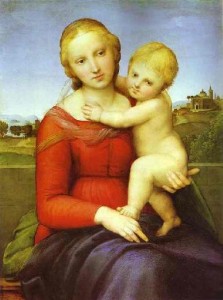 My article on Mary Mother of God and New Year’s Day is here at the National Catholic Register
My article on Mary Mother of God and New Year’s Day is here at the National Catholic Register
Did you know that, for centuries, Christians celebrated the new year on March 25 — not Jan. 1?
March 25 is the feast of the Annunciation, and the new year was celebrated on that day because the Annunciation to the Blessed Virgin Mary marked the beginning of mankind’s redemption. With the conception of Jesus in Mary’s womb, the second Eve reversed the first Eve’s rebellion, and mankind was on the way to being reconciled with God.
Celebrations of the year’s beginning date back to the time of Father Abraham in Mesopotamia, around 2,000 B.C. The ancients celebrated the new year at various times, but it was the Romans who consolidated the new year celebration in January. The month itself was named for the Roman god Janus, god of gates, doors and beginnings. Janus was shown with two faces — one looking forward and one looking back. Turning away from the pagan roots of the new year’s celebration, Christians chose March 25, not only because it was the feast of the Annunciation, but because it was also the spring equinox — a sensible start of the new year for an agricultural community.
By the time Pope Gregory XIII corrected the ancient Roman Julian calendar in 1582, most European nations had already officially adopted Jan. 1 as New Year’s Day. The English didn’t adopt the Gregorian calendar until 1752, and until then, they still kept New Year’s Day on the medieval “Lady Day” of March 25. Since then, Jan. 1 has taken over as New Year’s Day, and it has become an increasingly secular holiday.
However, by a quirk of history or a turn of divine Providence, the celebration of the new year has returned once again to a Marian celebration of the beginning of the world’s redemption.
Go here to read the full article.





